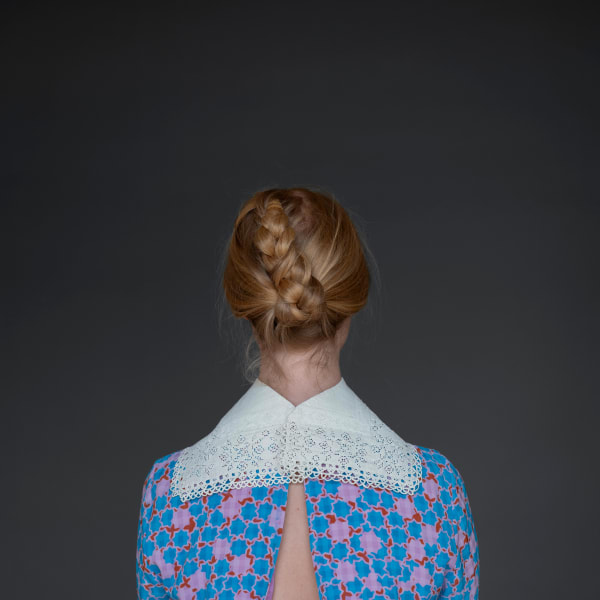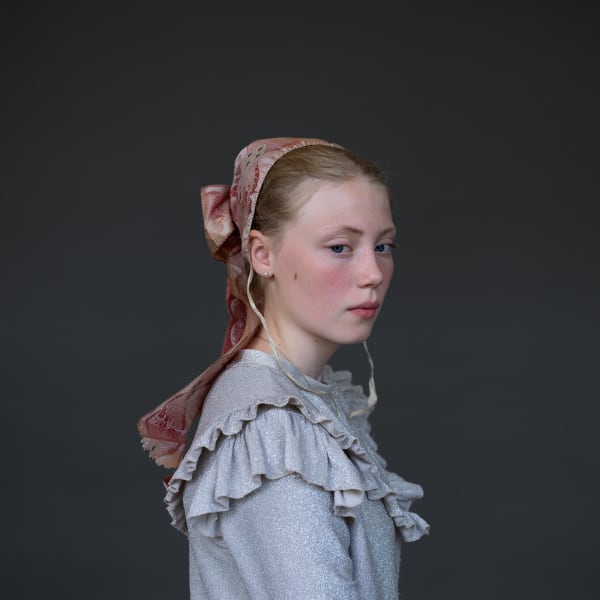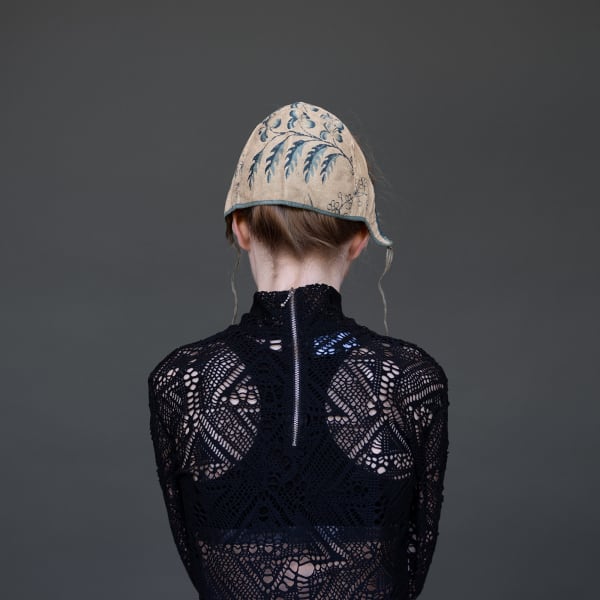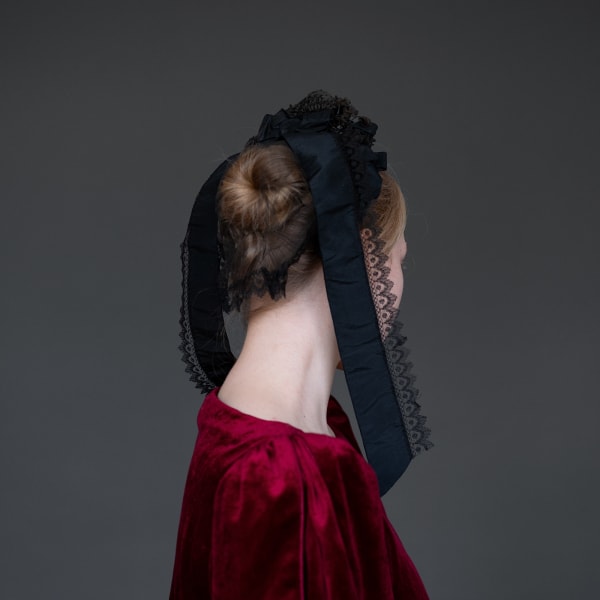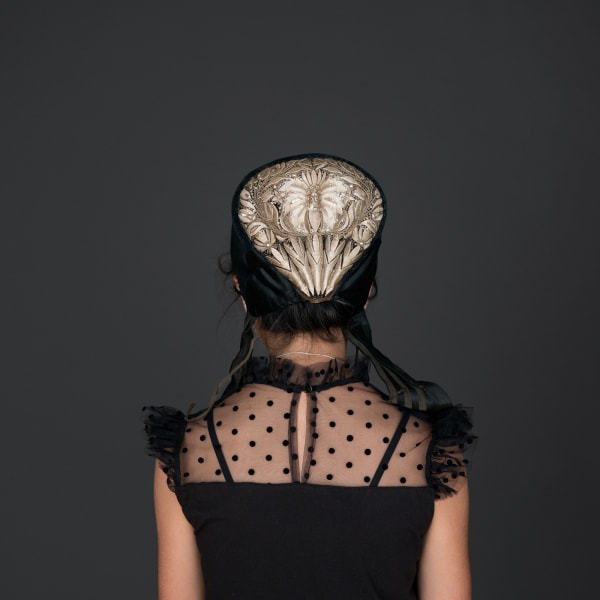-
Trine Søndergaard's series Hovedtøj (2019 -) represents the hidden or forgotten histories that are exclusively connected with a female perception of the world — a female perspective that in many cases has been erased or forgotten in the writings of official or traditional history. The Danish artist draws on classical portraiture to portray teenage girls dressed in their favorite fashions, pairing their modern attire with 19th century garments selected by Søndergaard. Bonnets, headwear, collars, and bows were created by working women of extraordinary needleworking skill. These historical garments are early examples of female entrepreneurship. The works create a connection between the past and the present and enable generations of women to meet — the dead and the living — across time.
-

-
It is apparent that these works are not an attempt at documentary, but instead a reflection based on a clash of time periods: “I try to create a new fictional and impossible time, where women from different times meet, connect, and in which something arises that has never been.”
The historical textiles function as traces of a bygone era and Søndergaard is fascinated by these accumulated but nearly forgotten phenomena; the cultural heritage that has shaped our society and all of us. The garments come from a time prior to women’s suffrage, gender equality and the right of self-determination. The positioning of the figures — their faced averted from the camera — obscures their identities, making them universal stand-ins for both the contemporary models and their 19th century antecdents.
In addition to Hovedtøj, Søndergaard has worked with historical textiles in the series Strude(2007-10), Guldnakke, (2012-13) and Dress of Mourning, 2015-16. Hovedtøj is made in collaboration with two Danish local cultural heritage museums: Skive Museum and Greve Museum. Søndergaard was granted access to their collections of garments and textiles from the local area. The young girls, who are photographed in the works, all live in the local area. They pose in their own private clothes- they are instructed to wear their favorite clothes, which are then combined with the historical garments.
-

-
AVAILABLE TO PURCHASE
-
-

-
-

-
-

-
-





